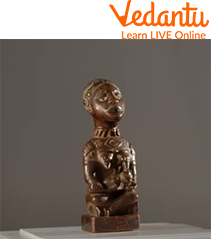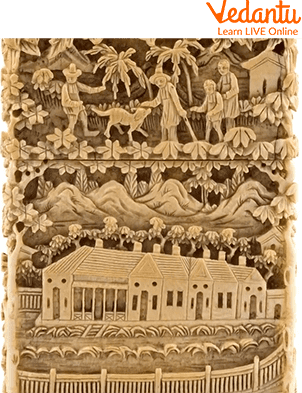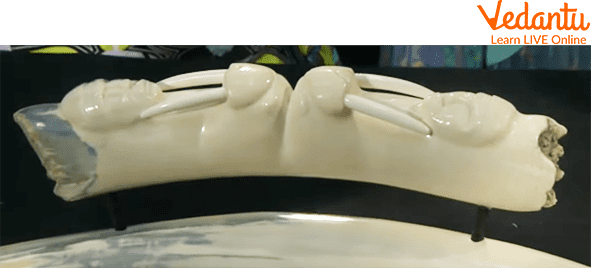




Overview About Ivory
Ivory is a hard, white material with a smooth texture that is usually made from elephant tusks and other animal teeth. Ivory has historically been used for various commercial purposes, including creating a variety of commercial purposes, including the creation of art pieces like sculptures, jewellery, piano keys, and other things. It can also be made synthetically, but ivory is mainly obtained from elephants. We will also talk about how ivory was originally utilised in this article and how its value was similar to that of gold. We'll also demonstrate some actual examples of the things that can be produced out of it. We will talk about the things made of ivory and what is ivory used for, so let’s dive in:
Common Things Made of Ivory
Ivory was formerly viewed as a prestige symbol, so many people placed it within buildings to make the infrastructure appear expensive. Jewellery, cutlery handles, piano keys, and priceless holy objects were all made from it. Ivory was used to carve reliquaries, crucifixes, relief panels, and the covers of psalter books. The religious themes of Christ's life and martyrdom were frequently carved during the Renaissance period into boards, buckets, combs, daggers, boxes, and chess pieces.
Worth of Ivory
Ivory has economic value because it was formerly the equivalent of gold; it was more valuable and had the same psychological impact on the populace as gold does today. Ivory had monetary worth and was traded and used to create money. It was utilised by artisans, architects, and craftsmen to make money, build riches, and produce art. It was worn by women and members of the upper class to display the opulent lifestyles they owned. Ivory is utilised in the production of electrical equipment, including radars and equipment specifically designed for aeroplanes, in the modern scientific and technological world.
Trade of Ivory
The human desire for ivory for ornaments, and many luxurious items is from ancient times. During prehistoric times, ivory was very much in use. Reindeer horns and mammoth tusks were significantly used but then elephant ivory came into use. As a consequence, the African elephant became endangered. The very first export of ivory from Africa and Asia has been traced back to the 14th century. The trade of ivory peaked again in the 17th century.
Since the trade of ivory has been banned by the government, ivory is even smuggled from one place to another.
Significant Historical Objects Made of Ivory
You can carve, authentic, turn ivory on a machine, and polish it to a brilliant sheen. Additionally, it can be painted, stained with colours, or bleached. The semi-translucent, milky white look of ivory ages to a yellowed patina. Some of the significant historical objects made of ivory are:

A Historical Figure Made of Ivory
1. The Democratic Republic of the Congo's Kongo artist created a figure with child, late 19th to early 20th century (mvuala, nkisi). It was made up of mirror, resin, pigment, and ivory.

A Book Cover Made of Ivory
2. This piece of art is a book cover depicting the early life of Jesus Christ. It is based on the time period of medieval ivory art.

The Ancient Ivory Elephant Mirror Case
3. This ancient ivory elephant mirror case depicts the triumphs of the deity of love opposing evil and it is based on a religious motif. One can see the god seated on the throne.
Poaching of Elephants for Ivory
Government after getting concerned about the decreasing number of elephants, put a ban on poaching and trade of ivory. Despite that ban, elephants are still being hunted and killed for ivory. This ban was introduced in 1989. The estimation of elephant hunting in the 1980s was that 100,000 elephants are being killed per year. In 2016, IUCN reported that the population of African elephants has seen its worst decline in 25 years. According to recent reports, only 40,000 - 50,000 elephants are left in the world. And the species of elephant have been declared endangered.
Summary
Ivory is a very rare material. In the current era, its value is comparable to that of gold. Its use has been deemed illegal since it endangers the very species of Asian and African elephants, as well as other animals from which ivory is obtained. There are several works of art and ivory carvings based on various religions and their mythologies, particularly those of Christ. It was used to make jewellery, chess boards, daggers, and piano keys. In the field of science and technology today, it is utilised in radar and the electrical equipment of aeroplanes. In this article, we have learnt about the value and uses of ivory and what is ivory used for. We have discussed the trade and worth of ivory as well. In case of any other doubts feel free to ask in the comments.
FAQs on Things Made of Ivory: A Precious Gem
1. What is the monetary value of Ivory?
A kilogram (2.2 pounds) of ivory can fetch $80 from a poacher. That's $800 for a typical elephant's 10 kilograms of ivory. The price of carved ivory is now around $60,000. It was frequently regarded as an investment.
2. Why was CITES formulated?
The Convention on International Trading in Endangered Species (CITES), an international pact involving 181 states to ensure that trade in specimens of wild animals and plants does not endanger their survival, outlawed the trade in ivory in 1989. People used to kill animals such as elephants and mammoths for ivory and due to this, they have become endangered. So to prevent the extinction of animals, the government illegalised the trade of ivory. This is when strict actions were taken to stop the exploitation of animals and laws were enacted to stop the trade.
3. How is ivory used for artwork?
Ivory is tougher than bone and difficult to deal with while creating artwork. Broken bits of ivory are glued together. Because of this, it has an incredibly smooth texture, maintaining its high quality while making carving and using it in building simple. Ivory is harder than the bone itself, which is why one can’t make a scratch on ivory as easily as one can make on a bone.









